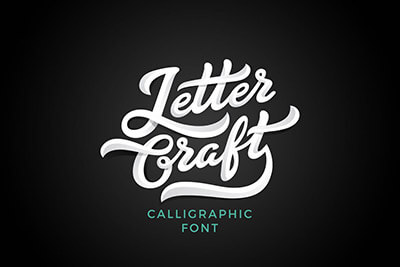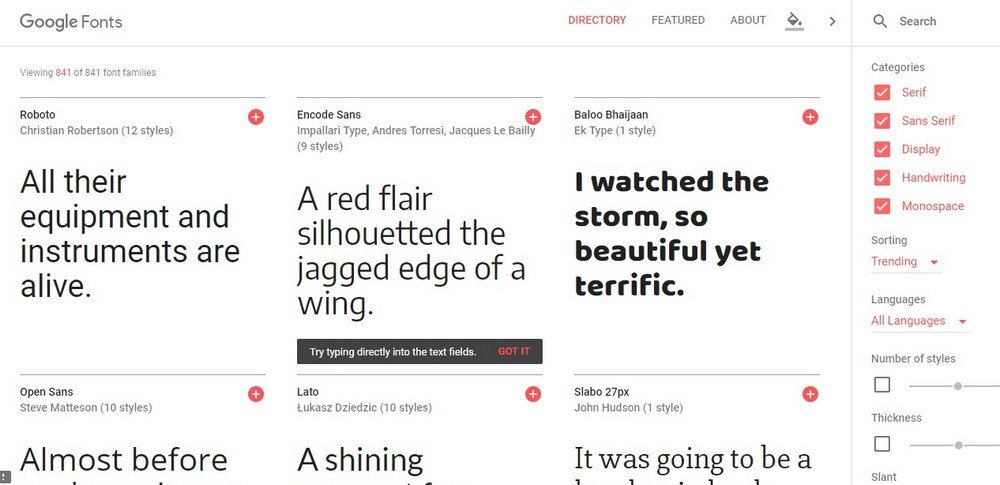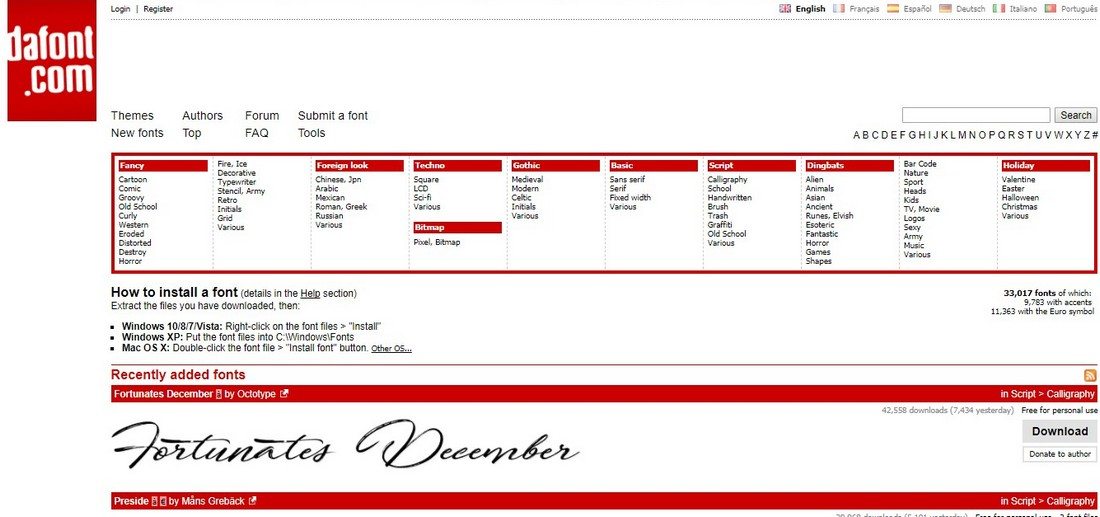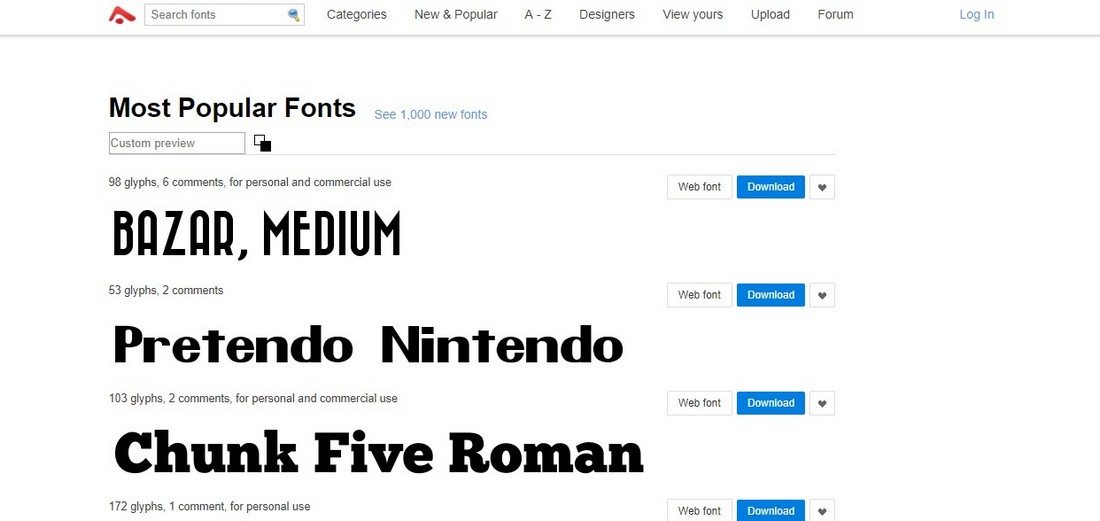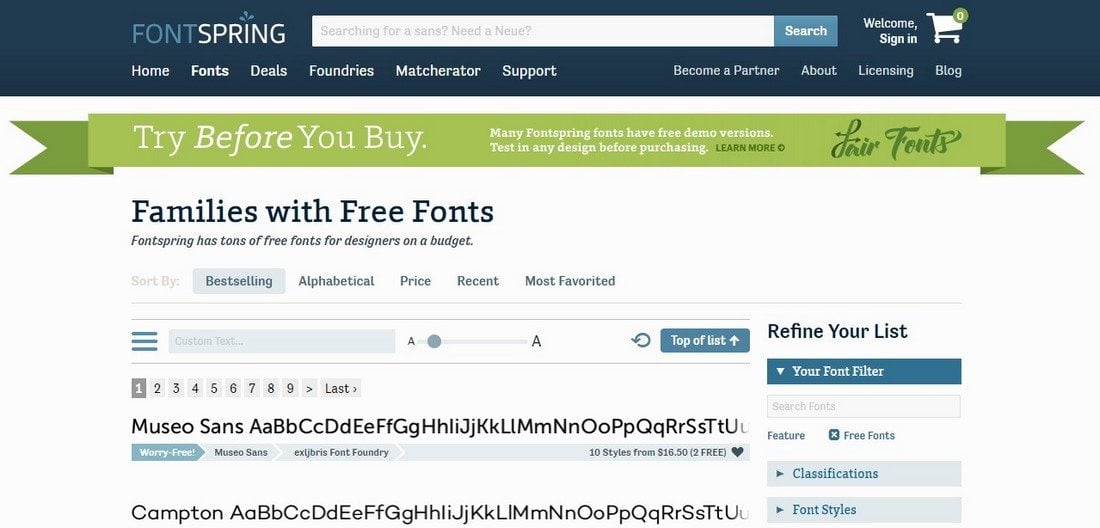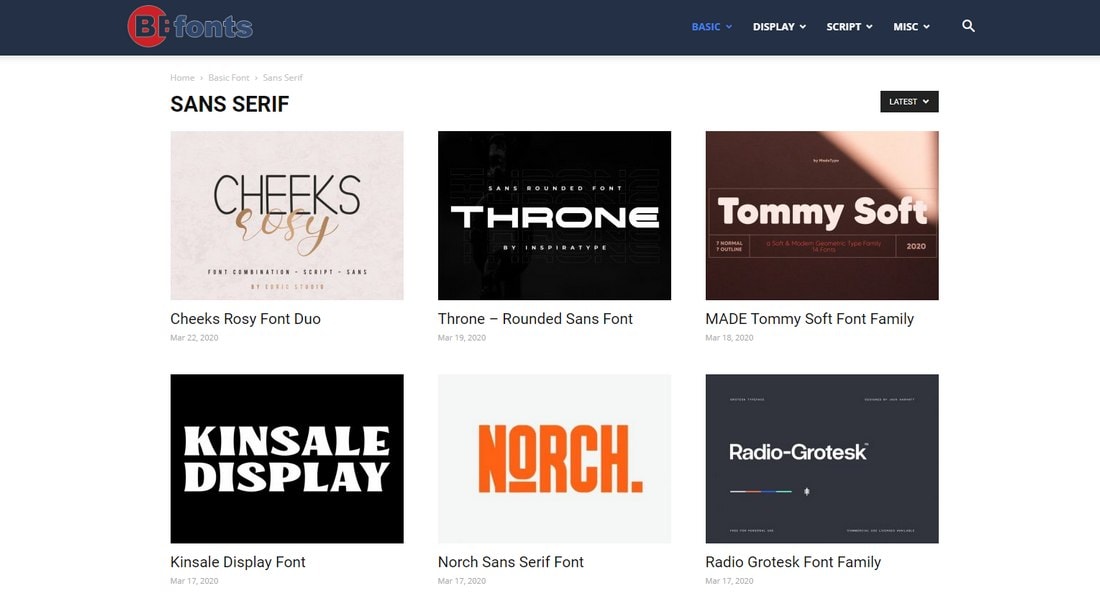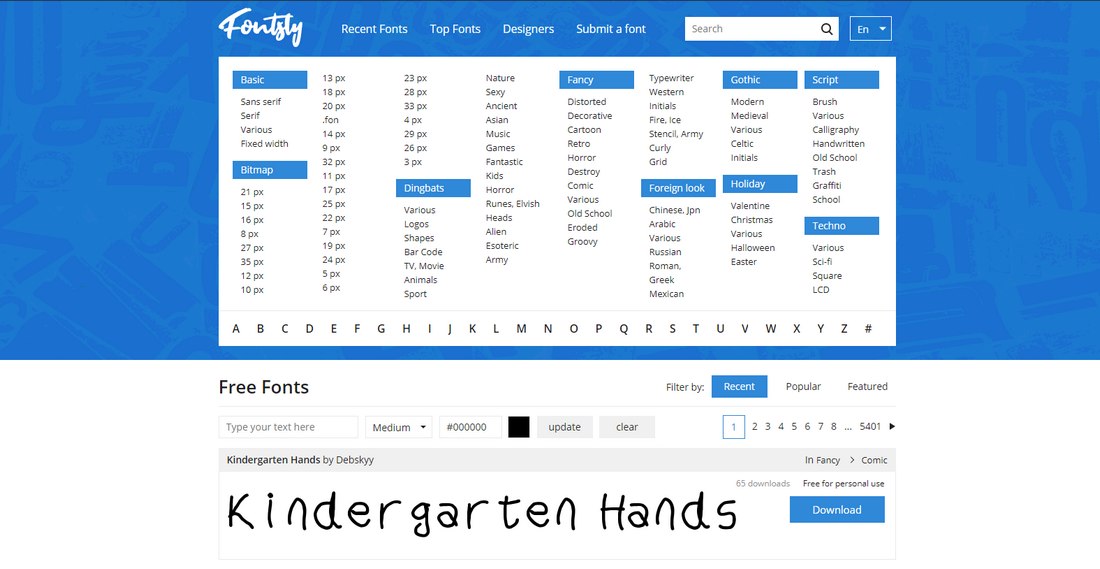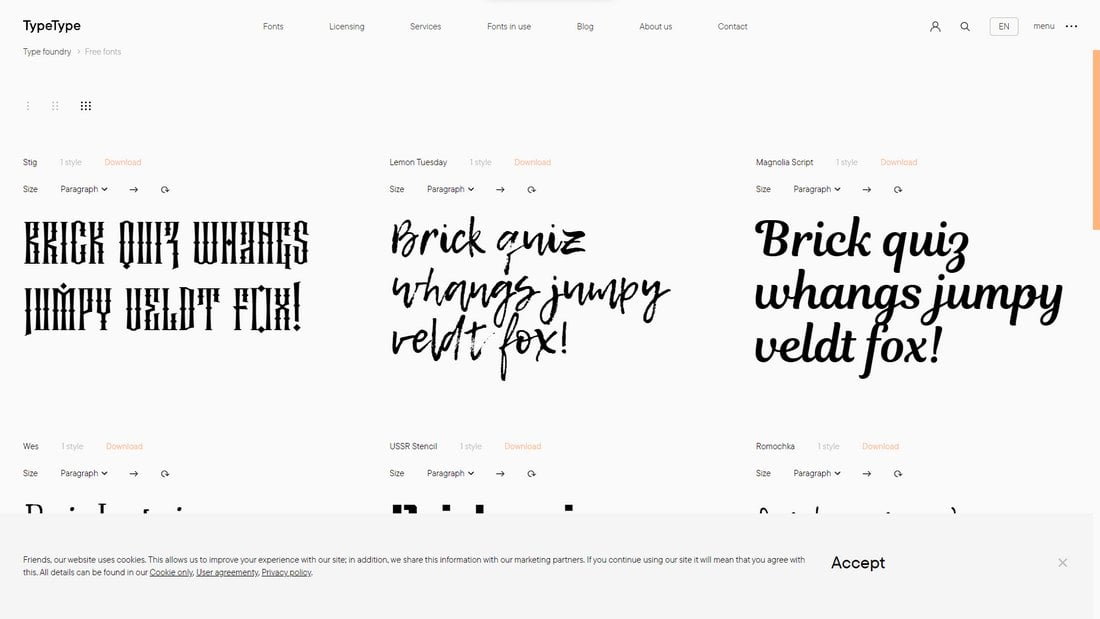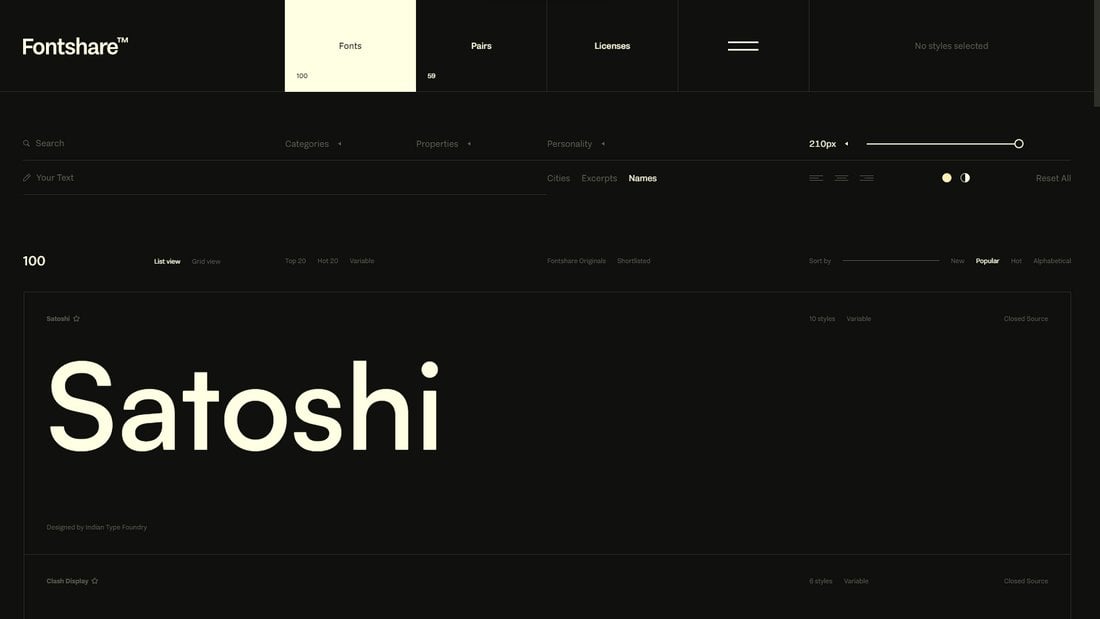20+ Best Places to Find Free Fonts
Typography plays a big role in all types of designs, from product packaging to mobile apps and more. Today we’re taking a look at the best places to find free fonts, and take your design work to a new level.
But why is typography so important? Remember what happened at the Oscars 2017, when they gave the Best Picture award to the wrong film? Typography is to blame for that huge mess. As the creative strategist Benjamin Bannister points out, a simple change in the font and the design could have helped avoid such an embarrassing incident.
This is why it’s important to have more options when designing a new project. Don’t settle for those overused default fonts. Be brave enough to try something new.
There are many places you can download a great looking font free of charge. We narrowed down the list to the top 20 websites for finding free fonts. Have a look.
2 Million+ Fonts, Typefaces, and Design Resources With Unlimited Downloads
Download thousands of stunning premium fonts and typefaces with an Envato Elements membership. It starts at $16 per month, and gives you unlimited access to a growing library of over 2,000,000 fonts, design templates, themes, photos, and more.
Just looking for a stylish free font? Let’s take a look at the best places to find them!
Things To Consider Before Using Free Fonts
Before downloading and using these fonts, you need to be aware of the rules. Just because it’s free doesn’t mean you get to do whatever you want with these fonts.
Most of the free fonts available on the web come with limited licenses, which means you can only use them with personal projects. However, there are sites that offer free fonts with commercial licenses.
Just be sure to check the license for each font you download before using them with your projects.
Now, let’s get to the fun part: Free fonts!
1. Google Fonts
Google Fonts is one of the first sites that come up on top when searching for free fonts. This massive library features over 800 font families of various types, from sans serif to handwriting fonts, monospaced fonts, and more.
Google Fonts is widely used by web designers for faster and reliable font hosting. However, what most designers don’t know is that the fonts in Google Fonts are downloadable.
And the best part is all the fonts on Google Fonts are open-source. You can use them however you like.
2. Font Squirrel
Font Squirrel is another reliable source for downloading free fonts of high quality. Most of the fonts featured in Font Squirrel also comes with commercial licenses. To avoid complications, the site makes it quite easier for users to check the licenses for each font before downloading them.
Font Squirrel also features a set of useful tools, including a Webfont Generator for creating your own web fonts and a cool Font Identifier, which helps you detect and find fonts based on images.
3. FontSpace
This site features a massive collection of over 32,000 free fonts from over 2,100 designers. It’s also the home for more than 746,000 members who enjoy downloading free fonts.
You can use FontSpace to find plenty of free fonts to use for your personal projects. Simply hovering over a font while browsing is enough to find out the license for the font before downloading.
As a registered member, you can even create a personal favorites collection to easily access the best fonts and you can also contact the designers and even donate a few dollars if you like.
4. MyFonts
MyFonts.com is one of the largest font marketplaces in the world, offering a vast array of professional fonts suitable for various projects. With a selection of over 270,000 fonts, the MyFonts.com caters to a wide range of needs, from individual designers to large enterprises. This diverse collection includes everything from brush fonts to display fonts, ensuring that users have access to a comprehensive typography toolkit.
MyFonts.com also provides a wide selection of completely free fonts, making it an excellent resource for designers and creatives looking to explore different typographic styles without any cost.
5. DaFont
DaFont is another popular platform for downloading free fonts. Most of the fonts in the site only support personal use, but there are plenty of fonts that come with commercial licenses as well.
One feature that makes DaFont stand out is its category system. Which lets you browse its fonts collection based on different themes like horror-themed fonts, video game fonts, valentine themed fonts, and much more. This offers designers an easy way to quickly find fonts for different types of projects.
6. Abstract Fonts
Abstract Fonts is a site that includes a curated collection of high-quality fonts. Most of the fonts available in the collection are free to use with both your personal and commercial projects. Just remember to check the license before downloading.
The website also features a fun category system for easier browsing. You can find fonts of different themes quite easily using these visualized categories.
7. Behance
Behance is not exactly a platform for fonts. It’s like a social network where designers create portfolios of their best work and share designs with each other.
Designers share lots of free content on Behance, this includes free fonts as well. A quick search on the platform will bring up an endless list of fonts that are available to download at free of charge.
The best part of finding fonts on Behance is that the fonts you find on this platform usually feature unique designs and are less used than the fonts you find on other sites.
8. FontStruct
FontStruct is actually a font building tool that allows you to create your own fonts with geometrical shapes. The tool generates TrueType fonts using your designs that can be used with any app and for any kind of work you want.
The site also contains a gallery full of more than 43,000 fonts. Most of which are created by people just like you. All free to download. You can even clone the fonts created by other users to design your own unique fonts.
9. 1001 Fonts
Don’t let that name fool you. 1001 Fonts includes more than 9,000 fonts. The site features an often updated collection of high-quality fonts. Many of the fonts are available for commercial use.
You can also browse the fonts in 1001 Fonts according to font style, size, and even font weight to quickly find fonts that match your design projects.
10. Urban Fonts
Urban Fonts is another great place to find free fonts. The site features a more detailed page for each font that shows you all the characters of the font along with a tool to test drive the fonts before downloading.
You can also browse fonts according to different themes and create an account to save fonts for later as well.
11. FontSpring
FontSpring is a premium fonts marketplace full of premium font families. But, the site also allows you to download a couple of free fonts from these font families to use them with your various projects. You can find detailed information about the font licenses in each font page.
12. Befonts
Befonts has a large collection of free fonts designed and submitted by professional designers and creatives around the world. However, the majority of the fonts available on the site are free samples of premium fonts. This means they include fewer font weights and you can only use the fonts with personal projects.
Even though, the high-quality fonts are worth checking out if you’re looking for a font for a non-commercial project.
13. Pixel Surplus
Pixel Surplus is a website that includes lots of different freebies such as PowerPoint templates, textures, vector graphics, and more. The site also has a free fonts collection with lots of premium-quality fonts.
The specialty of this site is that most of the fonts available are free to use with commercial projects. Which makes them perfect for freelancers and designers working on a budget.
14. Graphic Design Freebies
Graphic Design Freebies is another site that features a wide variety of freebies. It also has a free fonts section with hundreds of stylish and modern free fonts. You’ll find all kinds of fonts on this site including script, serif, brush, and more.
Most of the fonts are free to use with personal projects only. But there are a few fonts available for commercial use as well.
15. Awwwards
Awwwards is a site well-known among web designers. It’s where designers go to find inspiration and showcase their best work. The site also has a free fonts collection which features some of the most unique and uncommon fonts you’ll ever see.
The free fonts available in this collection are mostly free for personal use. There are commercial-use fonts as well. You’ll find a few hundred free fonts in this collection that are quite different from the rest of the free fonts out there.
16. Fontsly
Fontsly is another free fonts site that features a large collection of various styles of fonts. Whether you’re looking for a simple sans-serif font or a gothic font, you’ll find plenty of choices on this site.
Most of the fonts available on the site are only free for personal use. There are also free fonts for commercial use as well.
17. Fancy Fonts
Fancy Fonts is has a massive library of free fonts. The site has multiple categories for you to easily find any type of font from the collection. There are fonts curated for Instagram, Facebook, and YouTube as well.
Most of the fonts available on this site are free for personal use. You’ll find a few commercially licensed fonts in there too if you’re willing to look hard enough.
18. Fontesk
Fotesk is a wonderful site you can visit to find free fonts for all kinds of projects. It has more than 4,000 free fonts in all kinds of categories and design styles.
A cool thing about this site is that it allows you to filter the fonts based on the license. If you want to find a free font for a commercial project, you can tick the box for the license, pick a category, and search in just a few clicks.
19. Creative Fabrica
Creative Fabrica also has a big collection of free fonts. There are over 3800 fonts to choose from. You can also browse the fonts by different categories. You will have to register a free account to download the fonts.
The website mentions that all of the freebies are available under commercial license but does not specify any details on the usage. You should contact the website to find more details on font licenses before using them in client projects.
20. Freepik
Freepik is a well-known site for vector design resources and templates. The marketplace recently expanded its collection with a bunch of new categories, including fonts.
There are hundreds of free fonts available on Freepik for you to download. They come in TrueType and OpenType formats. Most of the fonts are available for commercial use, as long as you attribute the author.
21. Graphbox
Graphbox has a very small collection of free fonts. But it’s a curated collection that features some useful and creative fonts. Most of the fonts on this site are for personal use only. They are suitable for all kinds of DIY designs and small personal projects.
To download fonts or other resources from this site, you’ll have to register a free account. The free accounts also have a download limit and you can only download 2 items per day. So pick your fonts carefully.
22. Fontfabric
Fontfabric is a marketplace that sells high-quality premium fonts. But many of these fonts can be downloaded for free and use with your personal projects.
There’s a great collection of premium-quality fonts in this marketplace for you to choose from. And it has a very attractive preview mode that allows you to preview fonts before downloading them.
To download fonts, you just enter your email and Fontfabric will mail you the free font with its license agreement.
23. Unblast
Unblast is another popular site for downloading free stuff. It has a big collection of mockups, various templates, graphics, and fonts for you to download at zero cost.
The font collection has various styles of typefaces that you can quickly filter to find specific styles of fonts for your projects. Each font has a dedicated page with extensive details about the font along with preview images.
24. TypeType
TypeType is a very lightweight and straightforward website for downloading fonts. It simply shows you a list of fonts to download with previews that you can customize to see how it looks like in different sizes and arrangements.
There are all types of fonts available on this site and most of them are free to use with your personal and commercial projects.
25. Fontshare
Fontshare is a unique website for downloading free fonts. What makes it quite useful is its extensively customizable previews that let you test each font before downloading. It even has a section that helps you find the perfect font pairs as well.
The site has a big collection of fonts that are most suitable for personal projects.
26. All Free Fonts
With more than 14,000 free fonts to choose from, this site will give you plenty of options to find the right font for your project.
All Free Fonts is a massive freebie website that has a huge collection of free fonts. You can find all kinds of fonts under different categories ranging from comic fonts to Arabic fonts, alien fonts, logo fonts, and more. It also has a category for commercial fonts as well.
More Ways To Get Free Fonts
You can also download premium fonts for free. Popular marketplaces, such as Creative Market and Envato Elements give out free goodies every month to their registered users. It’s a great way to grab premium fonts without spending any money.
Or, if you have a few dollars to spare, you can sign up with Envato Elements and download hundreds of premium fonts in the platform for a low monthly subscription!



